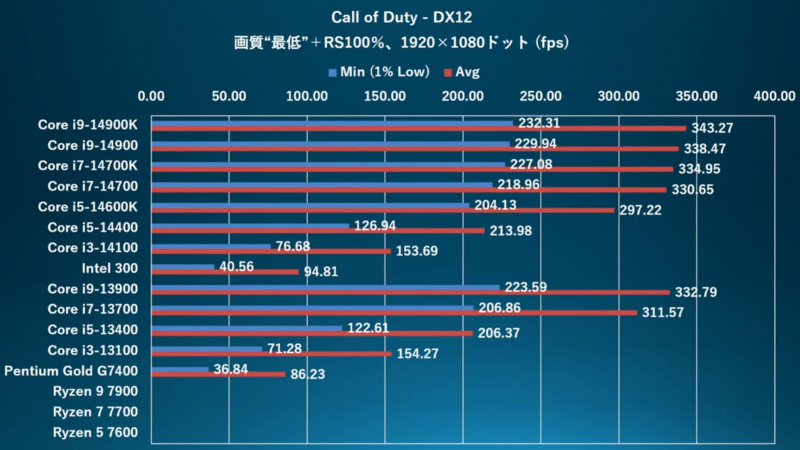According to recent tests conducted by Japanese publication PC Watch, it seems the most entry-level model from Intel’s refreshed Raptor Lake line – the Intel Processor 300 – is underway. As a refresher, Intel has renounced the Pentium and Celeron brands for the more universally sounding Intel Processor, making the 300 model a direct successor to Pentium Gold G7400.
The Intel Processor 300 comes with two cores supporting four virtual threads, operating at a frequency of up to 3.9 GHz, 200 MHz higher than its precursor. The chip lacks support for the Turbo Boost Max technology. The processor has a declared nominal TDP of 45W and includes 6MB of L3 cache memory, half of the lower-end quad-core Core i3-14100 in the main Core series processors (Raptor Lake Refresh). Additionally, the Intel Processor 300 comes with built-in Intel UHD Graphics 710 and is designed for use on motherboards with the LGA 1700 processor socket.


In single-core Cinebench performance tests, the chip lagged behind the Core i3-14100 by 13%, due to the lack of Turbo Boost Max support and a frequency decreased by 800 MHz. In the multi-threaded Cinebench 2024 test, the youngest Raptor Lake Refresh representative was 55% slower than its elder counterpart.




This dip in performance is seen especially in modern games, particularly those supporting DirectX 12, which are more adept at managing multiple cores and threads. Thus, the presence of merely two physical cores and four virtual threads significantly impacts the Processor 300’s performance.


It’s amusing to compare the newcomer with the flagship – the 24-core Core i9-14900K can provide a performance from 3.6 to 5 times higher. On the other hand, the basic quad-core Core i3-14100, in certain games, lagged behind the Processor 300 (up to 40 % due to lower frequency) but still remained primarily ahead, showing an advantage of up to 2.25 times.









